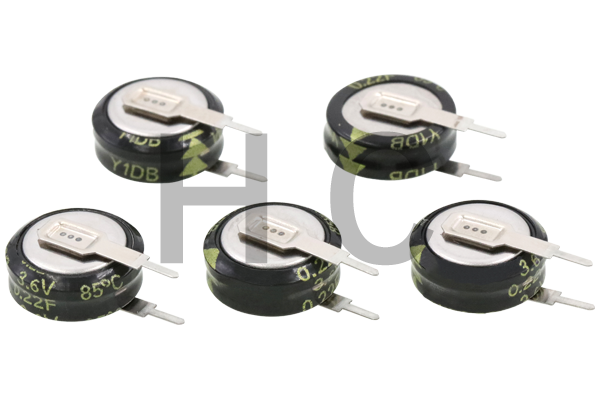Electric double layer capacitance: It occurs at the electrode/solution interface through the directional arrangement of electrons or ions to form a confrontation of charges. For an electrode/solution system, an electric double layer is formed at the interface of the electronically conducting electrode and the ionically conducting electrolyte solution. When an electric field is applied to the two electrodes, the anions and cations in the solution migrate to the positive and negative electrodes respectively, forming an electric double layer on the surface of the electrodes; after the electric field is revoked, the positive and negative charges on the electrodes are in phase with the oppositely charged ions in the solution. The attraction makes the electric double layer stable, and a relatively stable potential difference occurs between the positive and negative electrodes. At this time, for a certain electrode, an opposite ion charge equivalent to the charge on the electrode will be generated within a certain interval (dissipative layer), so that it maintains electrical neutrality; when the supercapacitor connects the two poles with the external circuit, the electrode The charge on the surface migrates to generate a current in the external circuit, and the ions in the solution migrate into the solution to be electrically neutral. This is the charging and discharging principle of the electric double layer capacitor supercapacitor module.
Farad capacitor: Its theoretical model was first proposed by Conway. Electroactive substances undergo underpotential deposition on the surface of the electrode and near the surface or in the two-dimensional or quasi-two-dimensional space, resulting in highly reversible chemical adsorption and desorption and oxidation. The recovery response produces capacitance related to the charging potential of the electrodes. For Faraday quasi-capacitors, the process of storing charges not only includes storage on the electric double layer, but also includes the oxidative recovery reaction between electrolyte ions and electrode active materials. When the ions in the electrolyte (such as H+, OH-, K+ or Li+) diffuse from the solution to the electrode/solution interface under the action of an applied electric field, they will enter the active oxide on the surface of the electrode through the oxidation restoration reaction on the interface. in the bulk phase, so that a large amount of charge is stored in the electrode. During discharge, these ions entering the oxide will return to the electrolyte from the beginning through the reverse reaction of the above oxidation recovery reaction, and the stored charge will be released through the external circuit, which is the charging and discharging mechanism of the Faraday quasi-capacitor.

(1) The charging speed is fast, charging for 10 seconds to 10 minutes can reach more than 95% of its rated capacity;
(2) The cycle life is long, the number of deep charge and discharge cycles can reach 10,000 to 500,000 times, and there is no "memory effect";
(3) Super high current discharge capacity, high energy conversion efficiency, small process loss, high current energy cycle efficiency ≥ 90%;
(4) High power density, up to 300W/KG~5000W/KG, equivalent to 5~10 times that of batteries;
(5) The raw material composition, production, use, storage and dismantling process of the product are free of pollution, which is an ideal green power source;
(6) The charging and discharging circuit of the supercapacitor manufacturer is simple, no charging circuit like the rechargeable battery is needed, the safety factor is high, and the long-term use is maintenance-free;
(7) Good ultra-low temperature characteristics, wide temperature range -40℃~+70℃;
(8) The detection is convenient, and the remaining power can be directly read out;
(9) The capacity range is usually 0.1F--1000F.

Shortcoming:
Improper use may cause electrolyte leakage;
Compared with aluminum electrolytic capacitors, its internal resistance is larger, so it cannot be used in AC circuits;
Advantages of supercapacitor modules
Farad-level capacitance in a small volume;
No special charging circuit and control discharge circuit are required;
Compared with the battery, overcharge and overdischarge will not have a negative impact on its life;
From the point of view of environmental protection, it is a kind of green energy;
Supercapacitors can be welded, so there are no problems like weak battery contacts;
